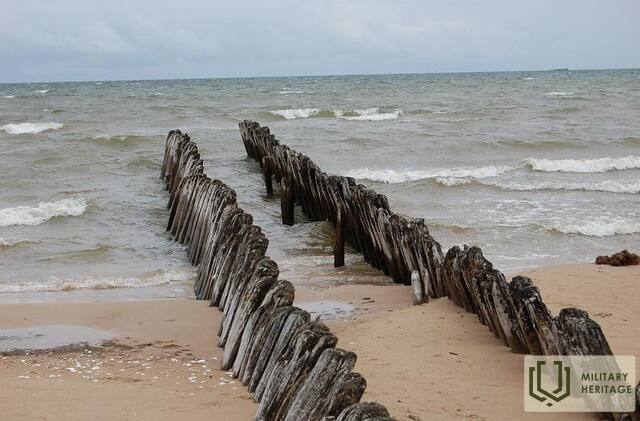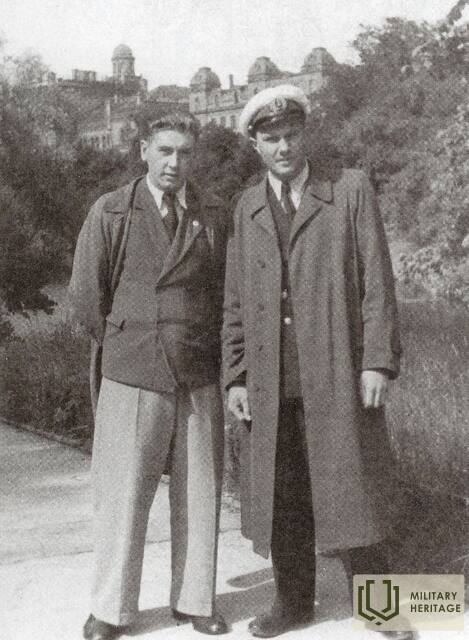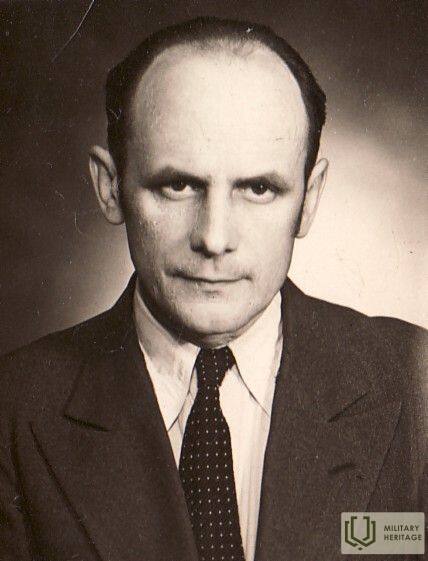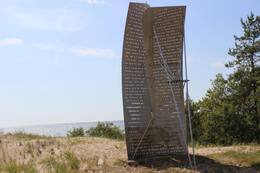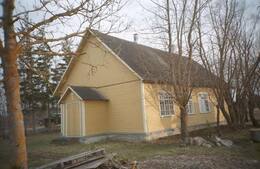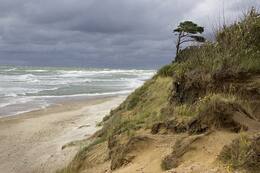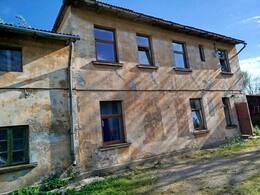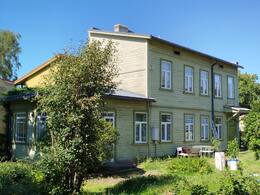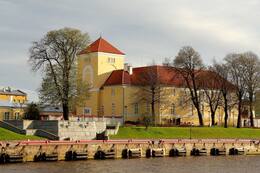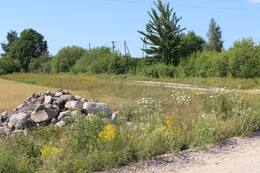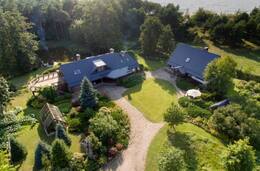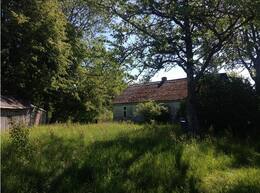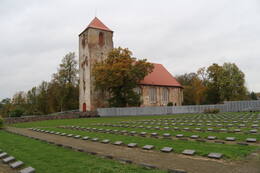Antrojo pasaulinio karo pabėgėliai II WW2
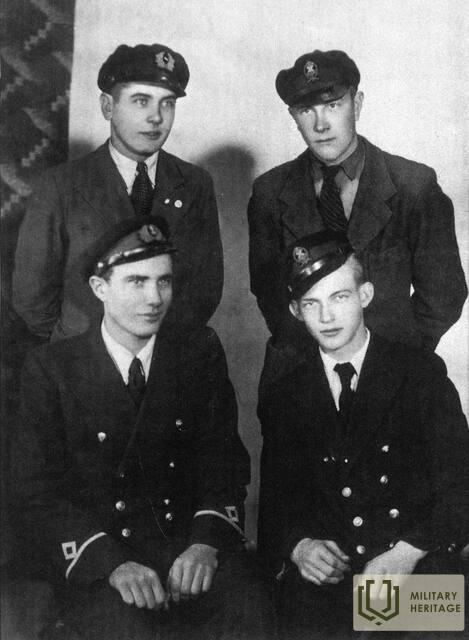
Represijos, areštai ir trėmimai per pirmąją Latvijos sovietų okupaciją 1940–1941 m. labai sukrėtė daugelį Latvijos gyventojų. Dėl to 1944 m. sovietų kariuomenei vėl priartėjus prie Latvijos ir jai iškilus antrosios okupacijos grėsmei, daugiau nei 200 000 (~10%) Latvijos gyventojų paliko savo namus karo liepsnose ir, rizikuodami savo gyvybėmis, ieškojo prieglobsčio vakaruose, Vokietijos režimo kontroliuojamoje teritorijoje, nes nebuvo užtikrintų deportacijų.
Apie 160 000 iš jų buvo civiliai, daugiausia pabėgėliai; 30 000 karių buvo pašaukti į latvių legioną, o 10 000 buvo išsiųsti dirbti į Vokietiją. Per karą daugelis neteko gyvybės būdami pabėgėliais, daugelį nustebino sovietų armija, todėl karui pasibaigus, buvusioje Vokietijos teritorijoje liko maždaug 114 000 Latvijos gyventojų.
Ne visi pabėgėliai atsidūrė Vokietijoje. Maždaug 3000 latvių pabėgėlių buvo pervežti per jūrą į Švediją slaptomis kelionėmis mažais žvejybos laiveliais, vėliau prie jų prisijungė kiti latviai iš Danijos ir Vokietijos. Beveik visi pabėgėliai, palikdami savo namus, manė, kad jų nebuvimas bus laikinas, kad sąjungininkų kariuomenė tęs karą, kol bus išlaisvintos visos komunistų užgrobtos žemės. Šios viltys nepasitvirtino, ir laikui bėgant pabėgėliams teko ieškotis nuolatinių namų už Europos ribų.






Daugiau informacijos šaltinių
http://pedas.lapamuzejs.lv/?page_id=1180 (žiūrėta 2021 11 4)
https://lv.wikipedia.org/wiki/Pirm%C4%81_pasaules_kara_latvie%C5%A1u_b%C4%93g%C4%BCi
57.0646
Susijusi laiko juosta
Susijusios vietos
Memorial sign for refugees "Sail of Hope" in Jūrkalne
The "Sail of Hope" commemorative sign for the World War II refugees who crossed the Baltic Sea by boat to the island of Gotland in Sweden in 1944 and 1945. The memorial is located in Osvalki on the dunes between the sea and Ventspils-Liepaja highway, near the public transport stop "Kaijas". It was created by sculptor Ģirts Burvis, who realised it as a sail of hope symbolising the memory of Latvian refugees.
...Monument to those who fled across the sea to Sweden in 1944
This monument is situated on the water’s edge on Cape Puise. In 1944, around 80,000 people fled westward from the advancing Red Army, many of them by sea. This monument, commemorating that mass flight, was designed by Aivar Simson. The idea originated from Heidi Ivask, who, held in her mother's arms, was one of many who waited for a boat on the beach in Puise. Construction of the monument was led by the Estonian Memento Union.
...Põgari House of Prayer
This house of prayer in situated in the village of Põgari-Sassi near the 1 km marker on the Tuuru-Puise road. On 18 September 1944, the day after the Germans began their retreat, Prime Minister Jüri Uluots, serving as the head of state, swore in the new Government of the Republic of Estonia. The Government adopted a resolution on the restoration of the independence of Estonia and on remaining neutral in the war. The inauguration of the government meant that the Red Army did not ‘liberate’ Estonia from the German occupying forces, but rather occupied an independent nation. The cabinet of Otto Tief held their last meeting at the Põgari Baptist house of prayer on 22 September 1944. This historic meeting is commemorated by a memorial tablet there...
The coast of Mazirbe, from where the refugee boat traffic to Sweden took place in 1944
The coast of Mazirbe was an important place in the Second World War, from where the traffic of refugee boats to Sweden took place in 1944.
Staldzene steep bank, from which refugee boats to Sweden were transported in 1944
In 1944, there was an active traffic of refugee boats to the shores of Sweden from Staldzene.
The building in Ventspils, where LCP liaison Valentine Jaunzeme (Lasmane) lived in 1944
House at Lauku Street 4, Ventspils, where the teacher teacher Valentīne Lasmane (b. Jaunzeme) (1916–2018) lived and worked, who in 1944-1945 worked as LCP liaison and member of Ventspils communication group. Lived in Sweden after World War II. She compiled the testimonies of 130 boat refugees in the publication "Across the Sea 1944/1945." (Stockholm, 1990), but V. Lasmane's own life story can be read in the book "The night is not just for sleeping" (Riga, 2020). In 2000, she was awarded the Order of Three Stars. Died at the age of 102 in 2018 in the Stockholm suburb of Tebia.
...The building in Ventspils, where in 1944-1945 In 2010, LCP representative and refugee boat traffic organizer Dr. lived in Kurzeme. Valdemars Ginters
House at 4 Katrīnes Street, Ventspils, where archaeologist Valdemārs Ęinters worked.
From October 1944 to May 8, 1945, the representative of the LCP in Kurzeme was archaeologist Valdemārs Ęinters (nicknames "Doctor", "Gardener") (1899–1979). Participant of the Latvian War of Independence, director of the State Historical Museum and docent of the University of Latvia. Awarded the Order of the Lāčplēš War and the Order of the Three Stars. One of the signatories...
Prison in the castle of the Livonian Order during World War II
1944-1945 in the prison set up in Livonia Oden Castle. In 2010, several members of the LCP Ventspils communication group and the movers of refugee boats were detained.
The road to "Grīnieku" houses in Vārve parish
The road to the "Grīnieku" house in Vārve parish, where in 1944 there was one of the main settlements of boat refugees on the coast of Kurzeme.
Refugee temporary accommodation "Vārve huts"
Vārves "huts", a place in Ventspils county, which served as a temporary accommodation for Latvian refugees who were waiting for boats from Gotland to arrive in 1944.
"Bambaļi" houses - one of the main places of accommodation for boat refugees
The restored "Bambaļi" houses in Ošvalki, Jūrkalne parish, were one of the main places of settlement for boat refugees on the coast of Kurzeme.
"Laukgaļi" house, writer Kārlis Skalbe's place of residence
"Laukgaļi" in Jūrkalne parish, the writer Kārlis Skalbe's place of residence in October-November 1944, while waiting for the refugee boat to Sweden.
Pāvilosta local history museum exposition
Named ‘Pāvilosta, a Closed Area’, the exhibit in the Pāvilosta Local History Museum is about everyday life in the town of Pāvilosta during the Soviet occupation; specifically, about the executive branch, border area, fishermen’s collective farm, and the cultural and social activities. In addition to the permanent exhibit, there is an interactive and emotionally rich digital exhibit in two languages and an audio-visual installation offering a film about Pāvilosta.
...Lestene Brothers' Cemetery
Located in Tukums region, Lestene, next to the church.
The construction of the Brothers' Cemetery in Lestene began in 1998. It is the second largest cemetery of soldiers in Latvia, where more than 1,300 Latvian legionnaires are buried together. Only after the restoration of the Republic of Latvia was it possible to bury Latvian soldiers who died in World War II from various places.
...Susijusi istorija
The successful escape of Valentina Lasmanes
A biographical story written by Valentina Lasmanes about how she managed to escape from detention during the German occupation
The last birthday celebration of Kārļis Skalbes on the coast of Kurzeme
On November 7, 1944, memories of poet Kārļis Skalbe's 65th birthday in Jūrkalne's "Laukgaļi" brought a bright mood to the Latvian refugee settlement on the Kurzeme coast. Just four days later, Kārlis Skalbe went by boat to Sweden as a refugee. It was the day when Kārlis Skalbe celebrated his birthday for the last time.
The secret and dangerous activity of Valdemar Günter
The name of Valdemārs Ęinter was the last hope of many Latvian refugees to escape to Sweden. Too much attention from the fugitives was dangerous, and therefore Günther maintained secrecy
The place where the refugee boats moved from the coast of Courland to Sweden near the houses of "Paža".
One of the important places of relocation was near the "Pāž" houses, where the "Sail of Hope" monument is now installed. "Boats came regularly and the most people left from "Pāži"", says I. Freiberg's memories.




